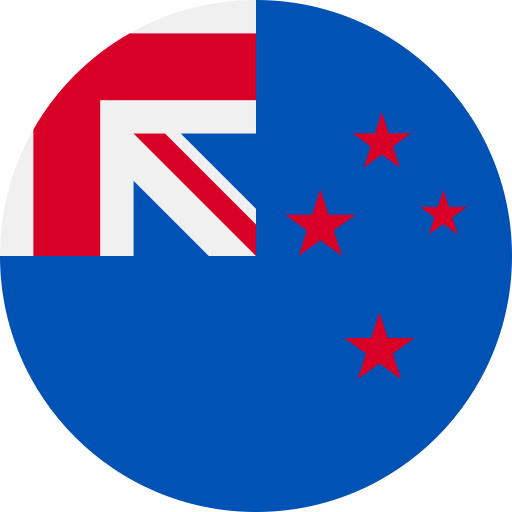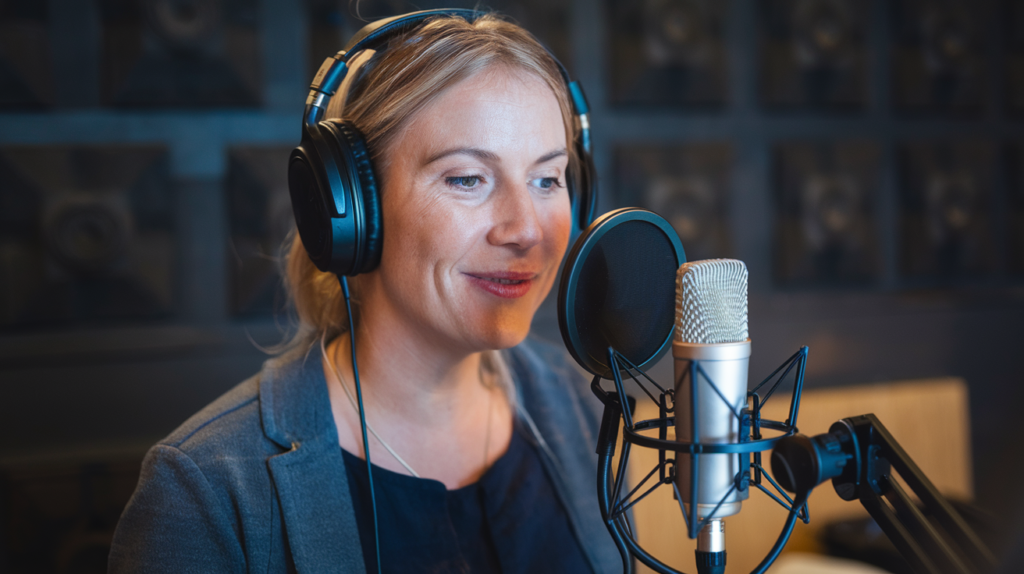Key Takeaways
- Diverse Accents: New Zealand English features distinct regional accents, with sharp vowels in Auckland and softer tones in Canterbury, reflecting local identities.
- Māori Influence: The integration of Māori vocabulary and phrases into everyday speech enhances the richness of New Zealand English, making it essential for voice artists to be familiar with these elements.
- Historical Context: British colonization introduced various dialects that mixed with local languages, creating unique speech patterns that diverge from standard British and Australian English.
- Regional Variants: Both the North and South Islands showcase unique accents; Aucklanders have pronounced vowel sounds while Cantabrians tend toward flatter pronunciations.
- Social Factors: Urban vs. rural dialects and generational differences significantly influence language use, impacting how language evolves over time within New Zealand communities.
- Authenticity in Voice Work: Understanding these regional variations is crucial for voice actors aiming to deliver authentic performances that resonate with local audiences.
Ever wondered why the Kiwi accent sounds so different depending on where you are in New Zealand? The regional variations of New Zealand English offer a fascinating glimpse into the country’s diverse culture and history. From the sharp vowels of Auckland to the softer tones of Canterbury, each region boasts its own unique flair.
Overview of New Zealand English
New Zealand English displays unique characteristics influenced by its cultural heritage and geographical diversity. The accent varies significantly across regions, creating distinct sound profiles that reflect local identities.
In Auckland, sharp vowels dominate the pronunciation, contributing to a lively and urban feel. Contrastingly, Canterbury features softer tones, offering a more laid-back auditory experience. This regional variation showcases how accents can evolve based on social factors and historical context.
Furthermore, Māori language integration enriches New Zealand English. You’ll find many Māori words incorporated into everyday use, enhancing the linguistic landscape. Phrases like «kia ora» (hello) or «haere mai» (welcome) illustrate this blend of languages.
The influence of British settlers is also evident in vocabulary choices and speech patterns. Certain terms might differ from standard British or Australian English but hold significance in local contexts.
Understanding these nuances plays a crucial role for voice artists when capturing authentic New Zealand accents in their work. Whether you’re producing voiceovers for commercials or narrating documentaries, recognizing these variations helps deliver a genuine representation of Kiwi culture.
As you explore regional differences within New Zealand English, consider how they can enhance your projects and connect with audiences effectively.
Historical Context of Regional Variations
Understanding the historical context of regional variations in New Zealand English reveals how language evolves alongside culture. The distinct accents and dialects across the country reflect a rich tapestry of influences, primarily from Māori culture and British colonization.
Influence of Maori Language
Māori language has significantly shaped New Zealand English, infusing it with unique expressions and vocabulary. Words like «kia ora» and «haere mai» are commonplace in everyday conversations, showcasing this linguistic integration. This influence extends beyond mere vocabulary; it affects pronunciation and intonation patterns as well. For voice artists aiming to deliver authentic performances, familiarity with Māori-derived phrases is crucial for capturing the true essence of Kiwi speech.
British Colonization and Its Impact
British colonization introduced various English dialects to New Zealand, particularly from England’s diverse regions. These early settlers brought their linguistic traits, which intermingled with local languages and cultures. Over time, this blending resulted in distinctive speech patterns that diverge from both standard British English and Australian English. Understanding these shifts is essential for voice actors who want to convey authenticity in their work. The nuances in accent can signal specific regional identities or cultural backgrounds to audiences familiar with those variations.
Grasping these historical contexts enhances your ability as a voiceover talent to connect meaningfully with listeners by reflecting the depth of New Zealand’s linguistic heritage.
Major Regional Variants
New Zealand English showcases distinct regional variants across both the North and South Islands. Understanding these differences enhances your ability to connect with local audiences, making it crucial for voice talent and voice actors alike.
North Island Variants
In the North Island, accents can vary significantly from city to city. For instance, Auckland’s accent features sharper vowels and a more pronounced intonation compared to the softer tones found in Wellington. This variation reflects not only geographical influences but also cultural diversity. Māori influence is notable here; many words from the Māori language are integrated into everyday speech. Phrases like «kia ora» often appear in conversation, adding richness to the dialect.
Voice artists should pay attention to these subtleties when crafting their performances. Capturing an Auckland accent requires precision in vowel pronunciation, while Wellington demands a smoother delivery. Recognizing these nuances can help you resonate more authentically with listeners.
South Island Variants
The South Island presents its own unique flavor of New Zealand English. Accents here tend toward a flatter vowel sound, especially in regions like Canterbury and Otago. The Christchurch accent stands out due to its distinctive blend of British influences mixed with local characteristics shaped by historical settlement patterns.
Understanding this regional variation is vital for voice actors aiming for authenticity in their projects set in southern locales. Incorporating phrases unique to the region can elevate your performance and create stronger connections with your audience.
Whether you’re honing a specific accent or exploring broader regional traits, awareness of these variations ensures that your voiceovers reflect true New Zealand English heritage—ultimately enriching your work as a voice over artist or talent.
Linguistic Features of Regional Variations
New Zealand English showcases a rich tapestry of linguistic features that differ significantly across regions. Understanding these nuances not only enriches your appreciation of the language but also enhances your ability to connect with audiences as a voice artist.
Pronunciation Differences
Pronunciation varies widely within New Zealand, reflecting distinct regional accents. In Auckland, you’ll notice sharp vowels that stand out in contrast to Wellington’s softer tones. This divergence creates unique sounds that capture the essence of each locale. For instance, vowel shifts often occur in words like «fish» and «chips,» where Aucklanders might pronounce them with a more pronounced ‘i’ sound compared to their Wellington counterparts.
In the South Island, particularly in Canterbury and Otago, accents trend toward a flatter vowel sound. Christchurch accent features an intriguing blend of British influences and local characteristics. When you’re aiming for authenticity in voiceovers or character portrayals, being aware of these subtleties can make all the difference.
Vocabulary Distinctions
Regional vocabulary distinctions further illustrate the uniqueness of New Zealand English. Certain words and phrases reflect local culture and history, which can enhance your projects as a voice actor or talent. For example, terms like “jandals” (flip-flops) and “bach” (holiday home) resonate deeply with Kiwis but may be unfamiliar elsewhere.
You’ll also encounter Māori vocabulary interspersed throughout everyday conversation. Words such as “kia ora” (hello) or “whānau” (family) are commonly used and add depth to authentic dialogue delivery. Recognizing these elements not only broadens your vocal range but also helps you engage meaningfully with New Zealand audiences.
By embracing these linguistic features—pronunciation differences and vocabulary distinctions—you equip yourself with valuable tools for delivering compelling voiceover performances that truly resonate with listeners across diverse settings.
Social Factors Influencing Language Variation
Social factors play a significant role in shaping the variations of New Zealand English. These influences contribute to how language is perceived and utilized across different regions.
Urban vs. Rural Dialects
Urban and rural dialects exhibit distinct features within New Zealand English. In urban areas, like Auckland, speech patterns often reflect a faster-paced lifestyle, with sharper vowel sounds becoming more prominent. You might notice that city dwellers incorporate slang and contemporary phrases into their daily conversations, emphasizing cultural diversity. On the other hand, rural accents tend to maintain traditional pronunciations, giving rise to softer tones. The contrast between these environments illustrates how geographical context impacts language use.
Age and Language Variation
Age also significantly affects language variation in New Zealand English. Younger generations frequently adopt new vocabulary and expressions influenced by social media and global trends. For instance, terms popularized online can quickly enter everyday conversation among youth in cities like Wellington or Christchurch. Conversely, older individuals might stick with more traditional speech patterns and local idioms shaped by decades of history. This generational divide creates a dynamic linguistic landscape that reflects broader cultural shifts across New Zealand.
Understanding these social factors enhances your ability as a voice artist or voice actor to capture authentic regional accents accurately. Recognizing the nuances between urban and rural dialects or age-related variations allows you to connect better with audiences through your performances while showcasing the rich tapestry of New Zealand’s linguistic heritage.
Conclusion
Exploring the regional variations of New Zealand English unveils a rich tapestry of accents and linguistic features. Each region’s unique characteristics reflect its cultural heritage and history, offering insights into the diverse identities within New Zealand.
Understanding these nuances not only enhances your appreciation for the language but also equips you with valuable knowledge if you’re working in voice talent or content creation. By recognizing how accents vary from city to city and how social factors play a role in language evolution, you can connect more authentically with audiences while showcasing the vibrant essence of Kiwi culture.
Frequently Asked Questions
What are the main regional accents in New Zealand?
New Zealand has distinct regional accents, primarily influenced by geography and culture. Auckland features sharp vowels, while Wellington’s accent is characterized by softer tones. In the South Island, Canterbury and Otago often have flatter vowel sounds. Each region reflects its unique cultural heritage.
How does Māori language influence New Zealand English?
Māori language enriches New Zealand English by introducing unique vocabulary and phrases such as «kia ora» and «haere mai.» This influence shapes pronunciation patterns and everyday communication, highlighting the deep connection between language and culture in New Zealand.
Why do accents vary between urban and rural areas?
Urban areas like Auckland exhibit faster speech patterns with contemporary slang due to their diverse populations. Conversely, rural dialects often maintain traditional pronunciations and slower tempos. These differences reflect social dynamics, lifestyle changes, and exposure to new linguistic influences.
How did British colonization affect New Zealand English?
British colonization introduced various English dialects to New Zealand that intermingled with local languages. This blend resulted in distinctive speech patterns that diverge from standard British or Australian English, emphasizing local significance while incorporating elements of the settlers’ backgrounds.
What role does age play in language variation in New Zealand?
Age significantly impacts language variation; younger generations tend to adopt new vocabulary influenced by social media trends while older individuals may stick to traditional speech patterns. This generational divide contributes to evolving accents and expressions within different communities across the country.
Why is understanding these accents important for voice artists?
For voice artists, grasping regional variations of New Zealand English is crucial for capturing authentic accents in projects like commercials or documentaries. Recognizing these nuances enhances audience connection by reflecting the rich linguistic heritage of New Zealand accurately.







